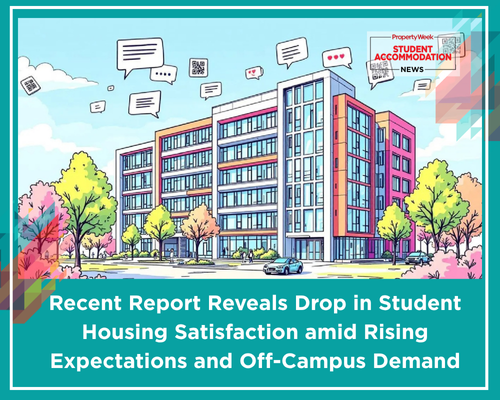
Recent Report Reveals Drop in Student Housing Satisfaction amid Rising Expectations and Off-Campus Demand
London: StarRez’s 2025 report highlights a significant decline in student housing satisfaction, driven by poor feedback systems, rising demands for privacy, and mental health support, alongside growth in off-campus living and increased use of digital tools to tackle staffing shortages and improve student autonomy.
StarRez has released its second annual State of the Student Housing Industry Report, presenting a detailed analysis of current trends and challenges in student housing across higher education. The company claims that the report, which includes data from over 400 institutions worldwide, reveals a fundamental shift in student housing dynamics, underscoring new expectations and operational pressures faced by institutions.
According to the release, there has been a notable drop in resident satisfaction rates, with nearly one in three institutions lacking formal mechanisms for collecting feedback from students living on campus. This gap in feedback systems is seen as a critical oversight in an environment where student demands are evolving rapidly. Experts outside the company highlight that effective feedback collection is essential for improving resident satisfaction and tailoring housing services to better meet student needs. They point to methods such as real-time feedback tools—using text messaging, QR codes, and web platforms—to swiftly address maintenance issues and improve communication, thereby enhancing the overall student housing experience.
The StarRez report emphasises several key themes shaping the student housing landscape in 2025. Rising student expectations now prioritise convenience, mental health support, inclusivity, and greater independence in living arrangements. This aligns with recent surveys indicating a growing demand for single rooms and accommodations that support emotional wellbeing, such as space for emotional support animals. At the same time, staffing shortages remain a significant challenge, with many institutions operating with very limited professional housing staff. The report suggests that these staffing strains are driving institutions to adopt automation and workload balancing techniques in order to maintain service quality and reduce staff burnout.
Technological advancements are also playing a crucial role, with many institutions implementing automated reporting, digital communication, and more sophisticated roommate-matching processes. Notably, over half of the schools surveyed now allow first-year students to choose their own roommates, a practice that appears to respond to student preferences for autonomy and social compatibility.
Another important finding from the report is the growing role of off-campus housing. Student demand for privacy and independence is leading more institutions to expand support for off-campus living options, especially among international students, who represent an increasing portion of the population seeking housing solutions outside traditional campus residences. This expansion includes partnerships with platforms designed to ease students’ transitions off campus, aiming to improve their overall academic experience.
Financially, the report notes a decline in revenue generated from summer, conference, and short-term housing stays. With a majority of institutions reporting reduced earnings from these non-academic periods, many are shifting focus toward maximising year-round revenue through events and alternative uses of housing assets.
Experts caution that while these findings offer valuable insights for institutional leaders, the success of housing programs will heavily depend on how effectively data is used not just to reflect current realities but to guide forward-looking strategies. The balance between meeting rising student demands, coping with operational constraints, and integrating new technologies presents a complex challenge for higher education housing providers needing to deliver safe, supportive, and financially sustainable living environments.

